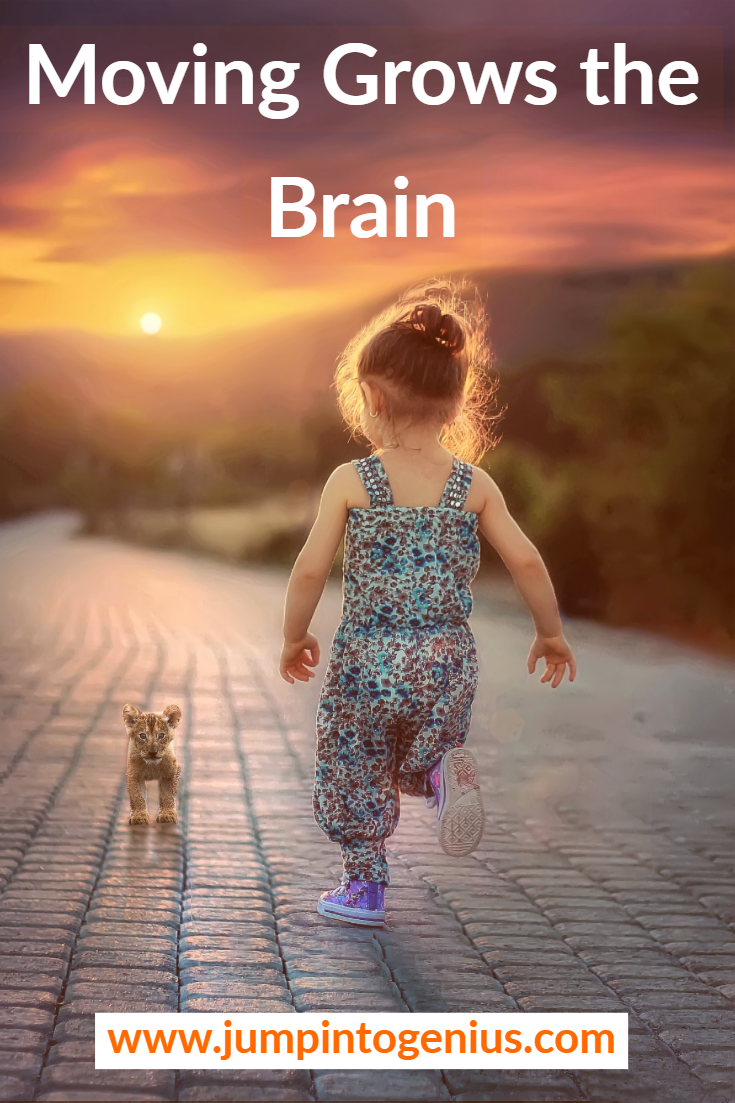
Why Getting Students Moving is Key to Academic Success
Research has shown that our brain structure is connected to the movement of our bodies. While getting enough oxygen to the brain is a really good reason to get your kids moving more, it is one small piece of the puzzle of benefits available to the brain when the body moves.
It is our movements that not only express knowledge and facilitate greater cognitive function, they actually grow the brain as they increase in complexity. Our entire brain structure is intimately connected to and grown by the movement mechanisms within our body.
Smart Moves - Carla Hannaford, Ph.D.
While separating the various needs and complexities of humanity may at first seem helpful, the downfall is our tendency to forget that human needs are all intertwined. Our mind needs us to move and exercise for its health just as much as our body does. Our mind and body, in fact, are not separate beings with conflicting needs. Scheduling movement into our days should be a part of our academic planning, not just an afterthought.
Outdoor Leisure Time should not be Optional
Certainly, we tend to think things like swimming and trips to the park with our young kids are optional. If we have no time for such frivolity, no big deal right? Wrong. Their brain needs those things, perhaps even more than it needs those 100 extra addition practice problems.
One thing that gets us off track is that physically moving is invisible to our sense of accomplishment. We hunger for achievement and academics gives us proof of what we have done. It is much more satisfying to look at all the writing and worksheets a child finished for the day and feel we are doing a good job…we have physical proof. There is no such sense of accomplishment available when we spend an hour at the park or pool.
Physical Play Creates Neurons
Yet it is quite likely that during that outdoor hour of physical play the child’s brain actually created more neural connections than it did while filling in the workbooks. Writing down physical movement as a daily goal to be achieved can help us shift our focus to include this crucial area of development. Having it on the list gives us at least a box to check off, even if we don’t have fancy papers to show off our achievements of physical play.
It’s funny to me, how in this modern world, we pay more attention to things that researches have proven. Many times research points to things that are really quite simple and obvious…
Researchers studying rodents and birds discovered that new nerve cells grow in response to enriched, secure, complex environments with space to move and explore, fresh air, good food and water, and playmates, and toys.
Smart Moves - Carla Hannaford Ph.D.
Imagine that?
Voluntary Movement is Key to Brain Growth
Researchers also found that cross-lateral voluntary movements seemed to be a key way to dramatically increase the number of surviving newborn nerve cells. An interesting detail is that when forced to run, as opposed to doing it voluntarily, the number of nerve cells decreased.
We are not going to get the same return in brain growth if we force our kids to move than we are if we encourage them to move and give them the space and time needed to move voluntarily. Voluntary movement happens most frequently during play, and especially during outdoor play.
Funny thing is, if you kick kids out of the house, as was often done in generations of the past, they will tend to move at some point. Their games will grow to take up the physical space around them. They will run and jump and spin until they collapse into delicious exhaustion.
Moving Yourself Will Motivate Your Kids to Move
Another great motivator to get kids moving is you. If you go to the pool and swim they will follow, if you go out for a walk, they will want to walk with you. If you offer to play nerf or laser guns, they will get moving too. In this way, you can keep your brain young while helping theirs grow. It sounds so simple.
Play with your kids.
But it is such a powerful force.
Rough and tumble play therapy was found to reduce hyperactivity in children labeled ADHD.
Modeling ADHD-type Arousal with Unilateral Frontal Cortex Damange In Rats and Beneficial Effects of Play Therapy. Brain Cognition, June, 2003
This state of play not only nourishes our neural connections and enhances our physical strength and dexterity but also fires up the endorphins that make you feel happy and give you the gift of motivation. How important is motivation for student success?
In three weeks we can get ten times more proficient at anything if we are emotionally engaged with focused interest.
Neural Plasticity - Merzenish, Taub, & Greenough 1999
Motivation is magic.
Self-initiated movement, exploration, interaction and physical experience for the joy and challenge of it, facilitates neurogenisis (nerve growth) for a lifetime.
Nature Neuroscience March 1999
The choice is ours. Get busy moving with our kids…or let the neurons die.
Want to know more about what happens in your kid’s brain when they move? Read 5 Ways Jumping Leads to Genius.



3 Responses
[…] They need to move. Moving grows the brain. […]
[…] healthy and not what our bodies are designed to do. Not only that, but movement actually creates brain growth. There is a lot going on in the brain when we move and although we have all the scientific evidence […]
[…] A child needs a lot of exercise, you can’t just give them a rat-wheel to run on and call it enriched. They need spaces to move in, things to balance on, stuff that makes them dizzy, and to get sweaty from movement every day. The movement builds the brain. […]